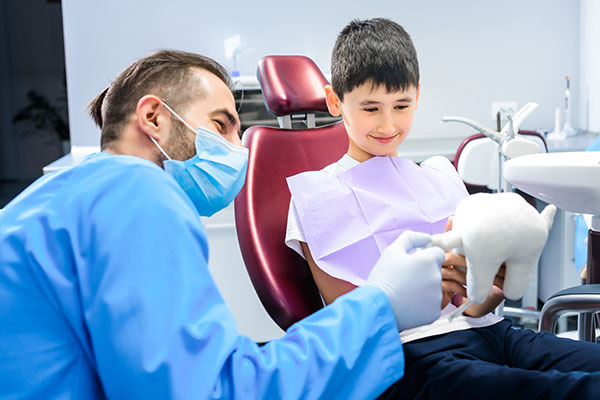Laser Dentistry for Root Canal Procedures

There are multiple areas in which the relatively new technique of laser dentistry has been applied. One of these is endodontics, which involves treating infections inside the tooth. This is accomplished with a procedure called a root canal. It involves drilling into a tooth to remove the infected pulp inside of it, replacing it with a biocompatible material and then sealing up the hole left behind in the tooth.
A root canal is an effective procedure with a success rate of over 90%. However, it can be painful and unpleasant for patients, who may dread the procedure and feel anxiety as it is happening. Laser dentistry for a root canal may reduce the patient's discomfort and improve efficiency compared to the traditional technique.
How is laser dentistry used in root canals?
A laser is a beam of intensely focused light. Laser is an acronym that stands for Light Amplification by Stimulated Emission of Radiation. By definition, a laser is different wavelengths of light that are lined up with one another so that they do not scatter the way light usually does. The result is a beam of energy that can interact with biologic tissues, including those in the mouth.
During a dental procedure, a laser can be used instead of a drill to access the root canal by opening the surface of the tooth. It can then be used to remove the pulp and disinfect the tooth of any lingering bacteria that caused the infection in the first place. Then it can shape and modify the inside surface of the tooth to get it ready for placement of the material that will fill the root canal in lieu of the infected pulp.
What are the potential advantages of laser dentistry for root canals?
It is important not to oversell the advantages of laser dentistry. The American Academy of Endodontists is still studying laser-assisted root canal procedures and comparing them to the traditional method. It is not yet clear which is better or more effective. With that said, some patients report less discomfort after the procedure with a laser-assisted root canal, and some endodontists observe less bleeding during the procedure when a laser is in use.
The sounds of the drill are disturbing and jarring to some patients. The use of a laser eliminates the need for a drill and may, therefore, cause the patient less anxiety during the procedure. It may be possible to preserve more healthy tooth structure and kill more bacteria due to the greater accuracy of the laser compared to traditional instruments.
Conclusion
Laser dentistry has gained the approval of the Food and Drug Administration for use in endodontic root canal procedures. Researchers continue to study the potential risks and benefits. In the meantime, to provide optimal effects for patients, some dentists and endodontists now combine the traditional technique with the use of the laser when performing root canals.
Request an appointment here: https://www.aboutdentalcare.com or call About Dental Care at (435) 652-9105 for an appointment in our St. George office.
Check out what others are saying about our services on Yelp: Read our Yelp reviews.
Recent Posts
A kid-friendly dentist offers specialized care for children of all ages. During a visit with a kid-friendly dentist, parents can expect them to perform diagnostic services such as dental X-rays and an oral examination. They may also perform a routine cleaning or general restorative work too.Every kid-friendly dentist has its own process for treating patients.…
A kid-friendly dentist can help your child by diagnosing, treating, and preventing oral health concerns. They also ensure children feel comfortable while they are in the office by designing the office to be more welcoming and having a friendly dental staff.The following is a review of a kid-friendly dentist and how they can help your…
Gum disease is a common yet serious condition that negatively impacts oral health if left untreated. The condition can result from plaque and bacteria buildup, starting with mild symptoms and leading to tooth loss. Knowing the stages of gum disease and when to seek treatment can help protect your gums and teeth.Gum disease, or periodontal…
Common treatment options offered by kid-friendly dentists include routine cleanings, sealants, dental fillings, dental crowns, and tooth extraction. Of course, most kid-friendly dentists have a much more extensive list of services and personalize the treatment plan based on each child's individual needs.Every kid-friendly dentist has their own set of services. This may include early orthodontic…


